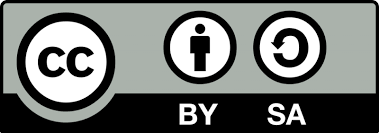Digitization of the educational inspection of Andalusia
DOI:
https://doi.org/10.23824/ase.v0i33.678Downloads
Abstract
The different challenges of the information and knowledge society have been tried by the Educational Inspectorate of Andalusia to take advantage of the Seneca Information System and other institutional applications of messaging and exchange of information and documentation.
These challenges, and especially the opportunities of the system outlined, give way to the digitization process of the Educational Inspectorate of Andalusia, which begins in the 2003-2004 academic year, progressively implementing the different modules for general functionalities, forging its own architecture in the Information System Seneca, and the scope of educational centers and services for access to information on these.
The General Action Plan of the Educational Inspectorate of Andalusia, for the period 2019-2023, includes this legacy to, strategically, continue promoting the process of digitizing the work of the Educational Inspectorate, with the aim of streamlining and optimizing its planning , monitoring their processes and controlling the results of their actions. Once the above is developed, there would be more suitable conditions to implement the process-based management approach, in order to adequately respond to the new needs and realities of the recipients of the actions of the Educational Inspection, by having a support where to settle it in line with the digital society.
References
Beltrán, J. et al. (2009).Guía para una gestión basada en procesos. Sevilla: Instituto Andaluz de Tecnología.
Editorial, E. (2019). Entrevista al inspector de educación de Madrid D. Carlos Utrera Infantes. Avances en Supervisión Educativa, (32).
Junta de Andalucía (2010).Séneca: la Plataforma para la Gestión del Sistema Educativo Andaluz. Servicio de Informática. Secretaria General Técnica. Documento inédito.
Luna Ariza, P., y Castellano Luque, E. (2014). El trabajo en red de la inspección de educación: el caso de la plataforma “INSPECTIO” en Andalucía. Avances en Supervisión Educativa, (22).
Martínez-Serrano, M. del C. (2019). Las plataformas educativas de la Consejería de Educación de la Junta de Andalucía y el plan de inspección educativa. Avances en Supervisión Educativa, (32).
Marquès, P. (2009). Innovación educativa con las TIC: infraestructuras, entornos de trabajo, recursos multimedia, modelos didácticos, competencias TIC. Recuperado de http://peremarques.net/innovacionescuelaTIC.htm
Ministerio de Hacienda y Administraciones Públicas (2015). Plan de Transformación Digital de la Administración General del Estado y sus organismos públicos (Estrategia TIC 2015 -2020). Dirección de Tecnologías de la Información y las Comunicaciones.
Osorio, M.L (2006). Sistema de información para la gestión de los centros de enseñanza en la Junta de Andalucía (SENECA-PASEN). Documento inédito.
Pérez Aguilar, J. (2019). La planificación de las actuaciones de la inspección educativa. Avances en Supervisión Educativa, (32).
Romero García, M. (2017). La comunicación mediada por tecnología como base de la mejora de la actuación de la Inspección Educativa: el Plan de Inspección 2016-17 en Andalucía. Avances en Supervisión Educativa, (27).
Secadura Navarro, T. (2008). Principios de organización de la Inspección Educativa en el Estado Español: fortalezas y debilidades. Avances en Supervisión Educativa, (8).
Silveria, F. (2019). Sistema de información Séneca. Documento inédito. Recuperado de https://www.adjudicacionestic.com
Tébar, F. (2019). La Inspección de Educación mirando al futuro. En Revista de Educación, nº 384, abril-junio 2019, pp. 123-146.
UNESCO (1996). La educación encierra un tesoro. Informe a la UNESCO de la Comisión Internacional sobre la educación para el s. XXI. Madrid, Santillana/Unesco.
Vázquez Cano, E., Arévalo Jiménez, J., & Gómez de Agüero, J. (2011). El desarrollo de cartas de servicios en la Inspección de Educación. Factor de calidad en la atención al ciudadano. Avances en Supervisión Educativa, (15).
How to Cite
Issue
Section
Published
Keywords:
License

Attribution Share-Alike CC BY-SA
Those authors who have publications with this magazine, accept the following terms:
A) The authors will retain their copyrights, which will be simultaneously subject to the Creative Commons Attribution License that allows others to re-mix, modify and develop on your work even for commercial purposes, provided they credit you And to license their new works under the same terms.
B) The authors will retain the rights of exploitation of the intellectual property of this work, and especially the rights of reproduction, distribution, transformation in any of its modalities and public communication of said work, which will be simultaneously subject to the License Of recognition of Creative Commons that allows others to re-mix, modify and develop on your work even for commercial purposes, provided they credit you and license your new works under the same terms.
Creative Commons Attribution-ShareAlike 4.0 International Public License

